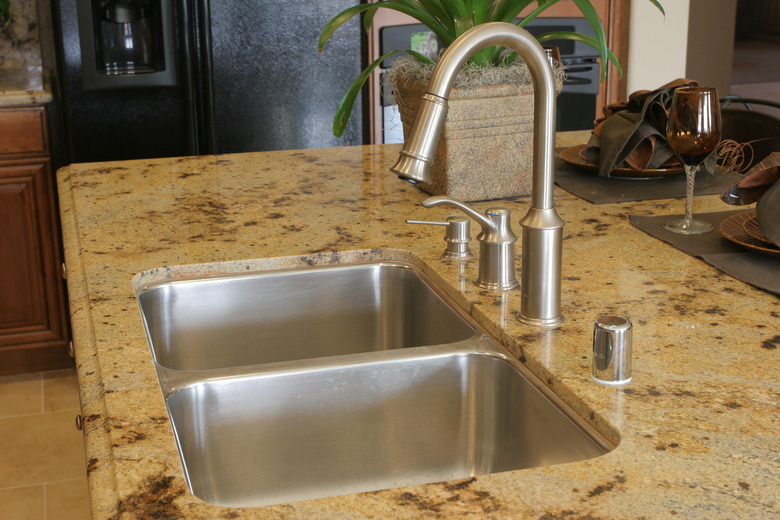How To Paint A Stainless Steel Sink
You've had it with unfinished metal surfaces in your kitchen, and you want to paint your stainless steel sink black, white or some other color. You may be wondering about the feasibility of painting stainless steel. Rest assured, your sink is no less paintable than your car.
The main difference between stainless steel and regular steel is that the stainless variety contains a small percentage of chromium. Its purpose is to oxidize and create a corrosion-resistant surface coating, but it won't interfere with paint adhesion. However, chromium is super hard – in fact, it's one of the hardest metals there is – so a little extra preparation is definitely in order. Moreover, you can't use just any paint. You need something much more durable than a latex enamel. Paint for sinks and tubs formulated with epoxy or urethane are among the best choices.
Spray Paint Your Kitchen Sink
Spray Paint Your Kitchen Sink
Two-part epoxy and urethane finishes are definitely hard enough to finish a sink, but these finishes really should be sprayed, and for that, you need to rent spray equipment. A great alternative is to use automotive paint, which comes in aerosol cans. If you simply want to freshen up the finish, and you like the metallic look of natural stainless steel, you could choose a product like Rust-Oleum stainless steel paint. It comes in aerosol cans as well as in regular cans.
The application method determines the appearance of the final finish. If you want a smooth, metallic finish, spraying is the way to go. However, if you're after a more textured appearance, go ahead and brush or roll with a paint roller. You can modify the brush or roller marks by dabbing with a sponge to get some interesting effects.
Prepare for Your Task
Prepare for Your Task
Because it's so hard, stainless steel must be etched before you prime and paint it. Before you do the actual etching, clean the steel well with a strong detergent, such as trisodium phosphate, to remove oils that have collected over the years. Rinse well, let the sink dry and then sand with a pad sander and 150-grit wet/dry sandpaper. If the metal is old and already a little rough, scrubbing the dry metal with medium fine-steel wool will also probably work. Tack off all the sanding dust, cover anything around the sink you don't want to paint with masking tape and masking paper and you're ready to paint.
Apply Stainless Steel Primer and Paint
Apply Stainless Steel Primer and Paint
Bare stainless steel needs a coat of primer before you apply the actual paint. You can buy stainless steel primer in an aerosol can and spray it on, or you can buy it in a regular can and apply it with a brush. A single coat is all you need. Let it dry, and then scuff with 220-grit wet/dry sandpaper before topcoating.
You'll need at least two coats of whatever paint you choose. Don't try to get full coverage with a single coat. Several thin coats are better than a single thick one, which can drop, sag and dry unevenly. Scuff each coat with 320- or 400-grit sandpaper before applying the next one. This ensures the smoothest possible final finish and is a good idea even if you're applying the paint with a brush or roller.
After applying the color coats, consider applying a single clear coat of acrylic sealer. It will protect the color coat and add shine and luster to the final appearance of the sink. After you're finished painting, wait two or three days – or more if the paint manufacturer recommends it – before using the sink.
